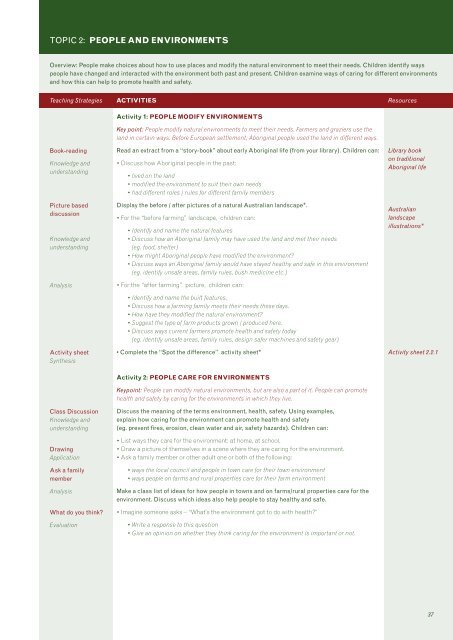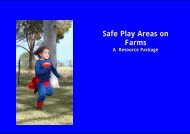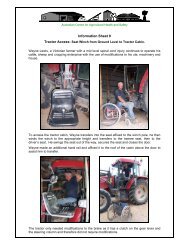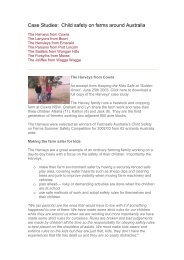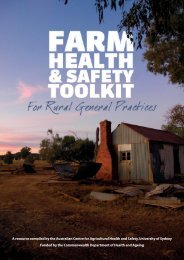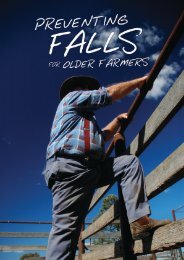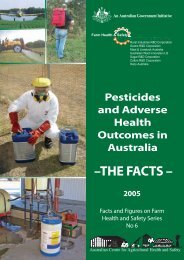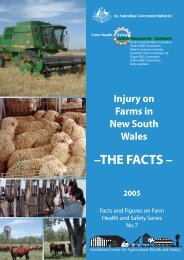Ripper ii Educational resource for primary schools - Australian ...
Ripper ii Educational resource for primary schools - Australian ...
Ripper ii Educational resource for primary schools - Australian ...
You also want an ePaper? Increase the reach of your titles
YUMPU automatically turns print PDFs into web optimized ePapers that Google loves.
TOPIC 2: PEOPLE AND ENVIRONMENTSOverview: People make choices about how to use places and modify the natural environment to meet their needs. Children identify wayspeople have changed and interacted with the environment both past and present. Children examine ways of caring <strong>for</strong> different environmentsand how this can help to promote health and safety.Teaching Strategies ACTIVITIES ResourcesActivity 1: PEOPLE MODIFY ENVIRONMENTSKey point: People modify natural environments to meet their needs. Farmers and graziers use theland in certain ways. Be<strong>for</strong>e European settlement, Aboriginal people used the land in different ways.Book-readingKnowledge andunderstandingPicture baseddiscussionKnowledge andunderstandingAnalysisActivity sheetSynthesisRead an extract from a “story-book” about early Aboriginal life (from your library). Children can:• Discuss how Aboriginal people in the past:• lived on the land• modified the environment to suit their own needs• had different roles / rules <strong>for</strong> different family membersDisplay the be<strong>for</strong>e / after pictures of a natural <strong>Australian</strong> landscape*.• For the “be<strong>for</strong>e farming” landscape, children can:• Identify and name the natural features• Discuss how an Aboriginal family may have used the land and met their needs(eg. food, shelter)• How might Aboriginal people have modified the environment?• Discuss ways an Aboriginal family would have stayed healthy and safe in this environment(eg. identify unsafe areas, family rules, bush medicine etc.)• For the “after farming” picture, children can:• Identify and name the built features.• Discuss how a farming family meets their needs these days.• How have they modified the natural environment?• Suggest the type of farm products grown / produced here.• Discuss ways current farmers promote health and safety today(eg. identify unsafe areas, family rules, design safer machines and safety gear)• Complete the “Spot the difference” activity sheet*Library bookon traditionalAboriginal life<strong>Australian</strong>landscapeillustrations*Activity sheet 2.2.1Class DiscussionKnowledge andunderstandingDrawingApplicationAsk a familymemberAnalysisWhat do you think?EvaluationActivity 2: PEOPLE CARE FOR ENVIRONMENTSKeypoint: People can modify natural environments, but are also a part of it. People can promotehealth and safety by caring <strong>for</strong> the environments in which they live.Discuss the meaning of the terms environment, health, safety. Using examples,explain how caring <strong>for</strong> the environment can promote health and safety(eg. prevent fires, erosion, clean water and air, safety hazards). Children can:• List ways they care <strong>for</strong> the environment: at home, at school,• Draw a picture of themselves in a scene where they are caring <strong>for</strong> the environment.• Ask a family member or other adult one or both of the following:• ways the local council and people in town care <strong>for</strong> their town environment• ways people on farms and rural properties care <strong>for</strong> their farm environmentMake a class list of ideas <strong>for</strong> how people in towns and on farms/rural properties care <strong>for</strong> theenvironment. Discuss which ideas also help people to stay healthy and safe.• Imagine someone asks – “What’s the environment got to do with health?”• Write a response to this question• Give an opinion on whether they think caring <strong>for</strong> the environment is important or not.37


